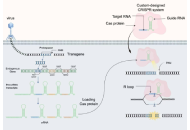
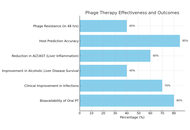

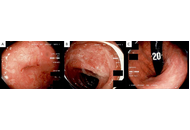
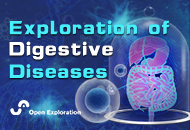
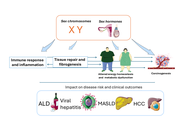
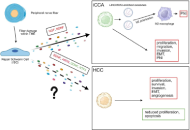
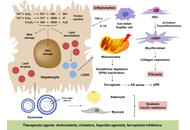
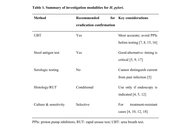
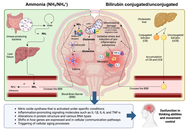
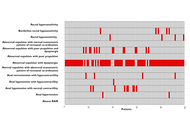
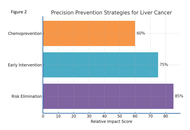
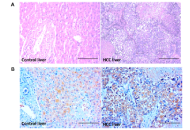
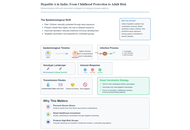
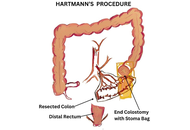
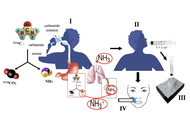
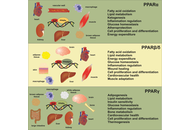
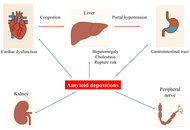
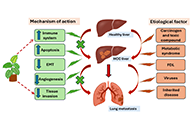


Gastric cancer (GC) is one of the most common malignant tumors, ranking fifth in incidence and third in mortality worldwide. China also bears a high burden of GC, second only to lung cancer. With the advancement of clustered regularly interspaced short palindromic repeats (CRISPR) technology, the mechanisms underlying the development and progression of various tumor types have been elucidated. This article summarizes the application of CRISPR technology in the functional genomics identification and target screening of GC genes, explores the use of chimeric antigen receptor T (CAR-T) cell therapy for solid gastric tumors, and discusses the progress and significance of CRISPR technology in constructing GC models using organoids.
Gastric cancer (GC) is one of the most common malignant tumors, ranking fifth in incidence and third in mortality worldwide. China also bears a high burden of GC, second only to lung cancer. With the advancement of clustered regularly interspaced short palindromic repeats (CRISPR) technology, the mechanisms underlying the development and progression of various tumor types have been elucidated. This article summarizes the application of CRISPR technology in the functional genomics identification and target screening of GC genes, explores the use of chimeric antigen receptor T (CAR-T) cell therapy for solid gastric tumors, and discusses the progress and significance of CRISPR technology in constructing GC models using organoids.
DOI: https://doi.org/10.37349/edd.2025.1005106

Liver cirrhosis is a condition characterized by scarring of liver tissue resulting from impaired liver function and systemic complications. It shows symptoms like jaundice, ascites, and hepatic encephalopathy. It has significant mortality and morbidity worldwide. As the study of microbial dysbiosis grows, it investigates how an imbalance in gut bacteria can speed up the progression of liver cirrhosis by spreading bacteria, endotoxins, and inflammation all over the body. Dysbiosis damages the gut–liver axis and eventually the liver. The study aims to analyze the therapeutic potential of bacteriophage therapy in liver cirrhosis. Bacteriophage treatment is a new focused method for treating microbial dysbiosis. Bacteriophages are viruses that target and attack harmful pathogens without affecting the helpful ones or causing an imbalance in the gut microbiota’s equilibrium. Since broad-spectrum antibiotics can affect the gut microbiota and lead to antibiotic resistance, phages are a better alternative due to their selectivity. According to preclinical research conducted in animal models, bacteriophage therapy can lower the bacterial load, enhance liver function tests, and decrease the systemic inflammatory indicators. Bacteriophage safety, as well as potential effectiveness in balancing gut microbiota, reducing systemic inflammation, and relieving symptoms such as hepatic encephalopathy, has been shown by preliminary clinical trials and case reports. However, issues like phage-resistant bacteria, patient-specific gut microbiota variation, and lack of clinical trials continue to prevent general use. Additional research is required to determine if it can be used in clinical practice, including large clinical trials and individualized strategies. Bacteriophage therapy is a promising and new technique for improving liver cirrhosis outcomes.
Liver cirrhosis is a condition characterized by scarring of liver tissue resulting from impaired liver function and systemic complications. It shows symptoms like jaundice, ascites, and hepatic encephalopathy. It has significant mortality and morbidity worldwide. As the study of microbial dysbiosis grows, it investigates how an imbalance in gut bacteria can speed up the progression of liver cirrhosis by spreading bacteria, endotoxins, and inflammation all over the body. Dysbiosis damages the gut–liver axis and eventually the liver. The study aims to analyze the therapeutic potential of bacteriophage therapy in liver cirrhosis. Bacteriophage treatment is a new focused method for treating microbial dysbiosis. Bacteriophages are viruses that target and attack harmful pathogens without affecting the helpful ones or causing an imbalance in the gut microbiota’s equilibrium. Since broad-spectrum antibiotics can affect the gut microbiota and lead to antibiotic resistance, phages are a better alternative due to their selectivity. According to preclinical research conducted in animal models, bacteriophage therapy can lower the bacterial load, enhance liver function tests, and decrease the systemic inflammatory indicators. Bacteriophage safety, as well as potential effectiveness in balancing gut microbiota, reducing systemic inflammation, and relieving symptoms such as hepatic encephalopathy, has been shown by preliminary clinical trials and case reports. However, issues like phage-resistant bacteria, patient-specific gut microbiota variation, and lack of clinical trials continue to prevent general use. Additional research is required to determine if it can be used in clinical practice, including large clinical trials and individualized strategies. Bacteriophage therapy is a promising and new technique for improving liver cirrhosis outcomes.
DOI: https://doi.org/10.37349/edd.2025.1005105
This article belongs to the special issue Gut Microbiota towards Personalized Medicine in Metabolic Disease

Pediatric cirrhosis differs significantly from adult liver disease in terms of etiology, progression, and management. The unique physiological, nutritional, and developmental needs of children require specialized diagnostic and therapeutic strategies. This review underscores the distinct challenges in diagnosing and managing pediatric cirrhosis, focusing on its complications, management, and outcomes. Unlike adults, where cirrhosis often results from viral hepatitis or alcohol use, pediatric cases are predominantly cholestatic, with biliary atresia being the most common cause. Complications mainly involve portal hypertension and impaired liver function, leading to malnutrition and neurodevelopmental delay. Nutritional management is complex and requires increased caloric and protein intake, supplementation with fat-soluble vitamins, and the use of medium-chain triglycerides. Although hepatocellular carcinoma is rare in children, it remains a severe complication with a higher incidence in certain genetic and metabolic disorders. Surveillance is challenging due to diagnostic limitations and the lack of standardized pediatric screening protocols. Treatment is further complicated by constraints related to size and developmental stage, particularly in the management of portal hypertension. Pediatric cirrhosis requires an individualized multidisciplinary approach to address the interplay between growth, nutrition, and liver function. Early diagnosis, nutritional optimization, malignancy surveillance, and timely referral for liver transplantation are crucial. Ongoing research on pediatric-specific therapies and outcomes is essential for improving prognosis and quality of life.
Pediatric cirrhosis differs significantly from adult liver disease in terms of etiology, progression, and management. The unique physiological, nutritional, and developmental needs of children require specialized diagnostic and therapeutic strategies. This review underscores the distinct challenges in diagnosing and managing pediatric cirrhosis, focusing on its complications, management, and outcomes. Unlike adults, where cirrhosis often results from viral hepatitis or alcohol use, pediatric cases are predominantly cholestatic, with biliary atresia being the most common cause. Complications mainly involve portal hypertension and impaired liver function, leading to malnutrition and neurodevelopmental delay. Nutritional management is complex and requires increased caloric and protein intake, supplementation with fat-soluble vitamins, and the use of medium-chain triglycerides. Although hepatocellular carcinoma is rare in children, it remains a severe complication with a higher incidence in certain genetic and metabolic disorders. Surveillance is challenging due to diagnostic limitations and the lack of standardized pediatric screening protocols. Treatment is further complicated by constraints related to size and developmental stage, particularly in the management of portal hypertension. Pediatric cirrhosis requires an individualized multidisciplinary approach to address the interplay between growth, nutrition, and liver function. Early diagnosis, nutritional optimization, malignancy surveillance, and timely referral for liver transplantation are crucial. Ongoing research on pediatric-specific therapies and outcomes is essential for improving prognosis and quality of life.
DOI: https://doi.org/10.37349/edd.2025.1005104
This article belongs to the special issue Cirrhosis and Its Complications

Interleukin-17 inhibitors (IL-17i) are used for dermatologic and rheumatologic immune-mediated inflammatory diseases (IMIDs), yet paradoxical inflammatory bowel disease (IBD) can occur. Although trials report low incidence, recognition and management remain difficult outside tertiary care centers. A 54-year-old woman treated with ixekizumab (IXE) for presumptive psoriatic arthritis (PsA) without definitive confirmation developed anorexia, weight loss, abdominal pain, rectal urgency, and hematochezia 16 weeks after IXE initiation. Limited access to gastroenterology contributed to the delayed workup. Catastrophic complications, including bowel perforation, postoperative abscesses, and severe malnutrition, resulted from the cumulative effects of longstanding, inadequately treated disease; excessive immunosuppression with high-dose corticosteroids and infliximab; and concurrent use of opioids and antidiarrheals, among other factors. On transfer to a center skilled in IBD, care included withdrawal of excessive immunosuppression, targeted antimicrobials, and nutrition rehabilitation. Histopathology of the surgical specimen was most consistent with features of Crohn’s disease (CD). After recovery, she achieved clinical, endoscopic, and histologic remission. On rheumatologic reassessment at an independent practice, she did not meet classification criteria for PsA. With continued specialty follow-up, the patient has remained in sustained clinical, laboratory, and endoscopic remission for 16 months, underscoring that timely recognition and disciplined, evidence-based care grounded in the principles used for severe IBD and drug-induced colitis can deliver favorable long-term outcomes. This case highlights the need for structured, accessible clinical guidance, not only to support non-IBD specialists in managing IL-17i-associated complications but also to guide clinicians during the pre-therapy phase in selecting appropriate candidates for treatment and assessing potential gastrointestinal risks before initiating therapy. We present an evidence-informed framework for resource-limited settings that addresses screening, early recognition, diagnostic workup, and therapeutic decision-making to guide safer IL-17i use and improve outcomes.
Interleukin-17 inhibitors (IL-17i) are used for dermatologic and rheumatologic immune-mediated inflammatory diseases (IMIDs), yet paradoxical inflammatory bowel disease (IBD) can occur. Although trials report low incidence, recognition and management remain difficult outside tertiary care centers. A 54-year-old woman treated with ixekizumab (IXE) for presumptive psoriatic arthritis (PsA) without definitive confirmation developed anorexia, weight loss, abdominal pain, rectal urgency, and hematochezia 16 weeks after IXE initiation. Limited access to gastroenterology contributed to the delayed workup. Catastrophic complications, including bowel perforation, postoperative abscesses, and severe malnutrition, resulted from the cumulative effects of longstanding, inadequately treated disease; excessive immunosuppression with high-dose corticosteroids and infliximab; and concurrent use of opioids and antidiarrheals, among other factors. On transfer to a center skilled in IBD, care included withdrawal of excessive immunosuppression, targeted antimicrobials, and nutrition rehabilitation. Histopathology of the surgical specimen was most consistent with features of Crohn’s disease (CD). After recovery, she achieved clinical, endoscopic, and histologic remission. On rheumatologic reassessment at an independent practice, she did not meet classification criteria for PsA. With continued specialty follow-up, the patient has remained in sustained clinical, laboratory, and endoscopic remission for 16 months, underscoring that timely recognition and disciplined, evidence-based care grounded in the principles used for severe IBD and drug-induced colitis can deliver favorable long-term outcomes. This case highlights the need for structured, accessible clinical guidance, not only to support non-IBD specialists in managing IL-17i-associated complications but also to guide clinicians during the pre-therapy phase in selecting appropriate candidates for treatment and assessing potential gastrointestinal risks before initiating therapy. We present an evidence-informed framework for resource-limited settings that addresses screening, early recognition, diagnostic workup, and therapeutic decision-making to guide safer IL-17i use and improve outcomes.
DOI: https://doi.org/10.37349/edd.2025.1005103

DOI: https://doi.org/10.37349/edd.2025.1005102
This article belongs to the special issue Advances in Hepato-gastroenterology: Diagnosis, Prognostication, and Disease Stratification

Females are more susceptible to alcohol-related liver disease (ALD) owing to increased risk of alcohol dependence; decreased gastric first-pass effect and increased risk of producing hepatotoxic metabolites, higher alcohol bioavailability, and hormonal fluctuations affecting ethanol metabolism. Male sex is independently associated with hepatitis B virus (HBV) infection and hypertransaminasemia in HBV chronic infection. Compared to women, men have higher risks of being hepatitis B surface antigen (HBsAg) carriers, exhibit higher non-response and lower long-term immunity after prophylactic vaccination, have a higher risk of chronic hepatitis, and fibrotic and hepatocellular carcinoma (HCC). Females have higher spontaneous hepatitis C virus (HCV) clearance and reduced risk of fibrosis, cirrhosis, and HCC than men. However, post-menopausal women experience more rapid progression of hepatic fibrosis and HCC development and lower response rates to antiviral regimens compared to younger women. Hormonal and immunological mechanisms explain these sex differences observed in chronic viral hepatitis B and C. Sex and reproductive status affect the risk of metabolic dysfunction-associated steatotic liver disease (MASLD) development and progression. Genetic sex and sex hormones are involved in the pathogenesis of sex differences in MASLD by differential effects on body fat distribution, insulin sensitivity, and oxidative stress. HCC may arise as a complication of ALD, HBV, HCV, and MASLD and has a definite prevalence in the male sex because of the most robust inflammatory response of the male sex and the anti-inflammatory activity of estrogens. We conclude that those major sex differences which are identifiable in the epidemiology and clinical course of ALD, viral hepatitis owing to HBV and HCV, MASLD, and HCC. These sex disparities are explained by biological sex and sex hormones affecting metabolism, immunity, fibrogenesis, and cancer, and are the foundations for precision medicine approaches in these common hepatological conditions.
Females are more susceptible to alcohol-related liver disease (ALD) owing to increased risk of alcohol dependence; decreased gastric first-pass effect and increased risk of producing hepatotoxic metabolites, higher alcohol bioavailability, and hormonal fluctuations affecting ethanol metabolism. Male sex is independently associated with hepatitis B virus (HBV) infection and hypertransaminasemia in HBV chronic infection. Compared to women, men have higher risks of being hepatitis B surface antigen (HBsAg) carriers, exhibit higher non-response and lower long-term immunity after prophylactic vaccination, have a higher risk of chronic hepatitis, and fibrotic and hepatocellular carcinoma (HCC). Females have higher spontaneous hepatitis C virus (HCV) clearance and reduced risk of fibrosis, cirrhosis, and HCC than men. However, post-menopausal women experience more rapid progression of hepatic fibrosis and HCC development and lower response rates to antiviral regimens compared to younger women. Hormonal and immunological mechanisms explain these sex differences observed in chronic viral hepatitis B and C. Sex and reproductive status affect the risk of metabolic dysfunction-associated steatotic liver disease (MASLD) development and progression. Genetic sex and sex hormones are involved in the pathogenesis of sex differences in MASLD by differential effects on body fat distribution, insulin sensitivity, and oxidative stress. HCC may arise as a complication of ALD, HBV, HCV, and MASLD and has a definite prevalence in the male sex because of the most robust inflammatory response of the male sex and the anti-inflammatory activity of estrogens. We conclude that those major sex differences which are identifiable in the epidemiology and clinical course of ALD, viral hepatitis owing to HBV and HCV, MASLD, and HCC. These sex disparities are explained by biological sex and sex hormones affecting metabolism, immunity, fibrogenesis, and cancer, and are the foundations for precision medicine approaches in these common hepatological conditions.
DOI: https://doi.org/10.37349/edd.2025.1005101

Recent studies demonstrate that peripheral innervation and Schwann cells (SCs) activity within the tumor microenvironment (TME) have a significant influence on liver cancer, specifically hepatocellular carcinoma (HCC) and intrahepatic cholangiocarcinoma (iCCA). Even though the role of SCs in HCC behavior is only hypothetical, neurotrophic factors like brain-derived neurotrophic factor (BDNF) and artemin (ARTN) enhance tumor growth, angiogenesis, and metastasis. Thus, targeting these pathways has a promising therapeutic potential. Conversely, receptors such as glial cell line-derived neurotrophic factor family receptor α-1 (GFRα1) and factors like neurotrophin-3 (NTF3) exhibit tumor-suppressive roles, indicating a context-dependent, dual impact of neurotrophic signaling in liver cancer. In iCCA, perineural invasion (PNI) correlates with poor prognosis, with SCs promoting tumor progression through the secretion of neurotrophic factors such as nerve growth factor (NGF) and BDNF, which activate signaling pathways downstream. These pathways facilitate epithelial-mesenchymal transition (EMT), invasion, and neural infiltration. This review emphasizes the complex roles of neurotrophic factors in hepatic tumors and their future potential as biomarkers and therapeutic targets via disruption of tumor-nerve interactions.
Recent studies demonstrate that peripheral innervation and Schwann cells (SCs) activity within the tumor microenvironment (TME) have a significant influence on liver cancer, specifically hepatocellular carcinoma (HCC) and intrahepatic cholangiocarcinoma (iCCA). Even though the role of SCs in HCC behavior is only hypothetical, neurotrophic factors like brain-derived neurotrophic factor (BDNF) and artemin (ARTN) enhance tumor growth, angiogenesis, and metastasis. Thus, targeting these pathways has a promising therapeutic potential. Conversely, receptors such as glial cell line-derived neurotrophic factor family receptor α-1 (GFRα1) and factors like neurotrophin-3 (NTF3) exhibit tumor-suppressive roles, indicating a context-dependent, dual impact of neurotrophic signaling in liver cancer. In iCCA, perineural invasion (PNI) correlates with poor prognosis, with SCs promoting tumor progression through the secretion of neurotrophic factors such as nerve growth factor (NGF) and BDNF, which activate signaling pathways downstream. These pathways facilitate epithelial-mesenchymal transition (EMT), invasion, and neural infiltration. This review emphasizes the complex roles of neurotrophic factors in hepatic tumors and their future potential as biomarkers and therapeutic targets via disruption of tumor-nerve interactions.
DOI: https://doi.org/10.37349/edd.2025.1005100
This article belongs to the special issue Fibrosis and Hepatobiliary Cancer

Metabolic dysfunction-associated steatotic liver disease (MASLD) is increasingly recognized as a multisystem disorder in which iron acts as both a metabolic “spark” and an accelerant of liver injury. This integrates emerging evidence that iron-driven oxidative stress and low-grade inflammation are mutually reinforcing processes in metabolic liver disease. In this perspective article, epidemiological evidence, molecular insights, and emerging clinical data are integrated to clarify how hyperferritinemia, often dismissed as a mere inflammatory marker, maps onto genuine iron redistribution and overload in the metabolic liver. Physiological iron homeostasis and its disruption by adiposity-related inflammation, hyperinsulinemia, sex hormones, and common HFE variants, creating a labile catalytic iron pool that fuels Fenton chemistry in lipid-laden hepatocytes. Population studies and expert-panel criteria are summarized that define “metabolic hyperferritinemia” and stratify dysmetabolic iron accumulation into three magnetic resonance imaging (MRI)-based grades, each linked to stepwise increases in steatosis, fibrosis, and clinical events. Mechanistically, excess Fe2+ triggers lipid peroxidation, mitochondrial dysfunction, ferroptosis, Kupffer cell activation, endoplasmic reticulum stress, and hepatic stellate cell sensitization to TGF-β, thereby accelerating the transition from steatosis to steatohepatitis and fibrosis. Finally, the diagnostic algorithms, iron-modulating therapies (phlebotomy, hepcidin agonists, diet), and prospective data supporting ferritin-based triage in clinics are discussed. Collectively, the outlined evidence positions iron not only as a biomarker but also as a modifiable driver of MASLD progression, underscoring the need for randomized trials that test whether targeted iron reduction improves hard hepatic outcomes.
Metabolic dysfunction-associated steatotic liver disease (MASLD) is increasingly recognized as a multisystem disorder in which iron acts as both a metabolic “spark” and an accelerant of liver injury. This integrates emerging evidence that iron-driven oxidative stress and low-grade inflammation are mutually reinforcing processes in metabolic liver disease. In this perspective article, epidemiological evidence, molecular insights, and emerging clinical data are integrated to clarify how hyperferritinemia, often dismissed as a mere inflammatory marker, maps onto genuine iron redistribution and overload in the metabolic liver. Physiological iron homeostasis and its disruption by adiposity-related inflammation, hyperinsulinemia, sex hormones, and common HFE variants, creating a labile catalytic iron pool that fuels Fenton chemistry in lipid-laden hepatocytes. Population studies and expert-panel criteria are summarized that define “metabolic hyperferritinemia” and stratify dysmetabolic iron accumulation into three magnetic resonance imaging (MRI)-based grades, each linked to stepwise increases in steatosis, fibrosis, and clinical events. Mechanistically, excess Fe2+ triggers lipid peroxidation, mitochondrial dysfunction, ferroptosis, Kupffer cell activation, endoplasmic reticulum stress, and hepatic stellate cell sensitization to TGF-β, thereby accelerating the transition from steatosis to steatohepatitis and fibrosis. Finally, the diagnostic algorithms, iron-modulating therapies (phlebotomy, hepcidin agonists, diet), and prospective data supporting ferritin-based triage in clinics are discussed. Collectively, the outlined evidence positions iron not only as a biomarker but also as a modifiable driver of MASLD progression, underscoring the need for randomized trials that test whether targeted iron reduction improves hard hepatic outcomes.
DOI: https://doi.org/10.37349/edd.2025.100599
This article belongs to the special issue Advances in Hepato-gastroenterology: Diagnosis, Prognostication, and Disease Stratification

This review explores recent advancements in the management of Helicobacter pylori infection, a widespread bacterial pathogen associated with various gastrointestinal disorders. The paper discusses improved diagnostic techniques, including molecular methods and non-invasive tests, which have enhanced detection accuracy and antibiotic resistance profiling. New treatment strategies, such as individualized therapy based on antimicrobial susceptibility testing (AST) and the use of probiotics as adjunctive therapy, are examined. The review also addresses the challenges of antibiotic resistance, highlighting the importance of surveillance and monitoring strategies. Novel antibiotic combinations and non-antibiotic therapies, including antibiofilm agents, are presented as potential solutions. The paper concludes by discussing post-treatment follow-up, management of persistent infections, and considerations for special patient populations. Future directions in Helicobacter pylori management, including emerging technologies and global eradication efforts, are briefly outlined.
This review explores recent advancements in the management of Helicobacter pylori infection, a widespread bacterial pathogen associated with various gastrointestinal disorders. The paper discusses improved diagnostic techniques, including molecular methods and non-invasive tests, which have enhanced detection accuracy and antibiotic resistance profiling. New treatment strategies, such as individualized therapy based on antimicrobial susceptibility testing (AST) and the use of probiotics as adjunctive therapy, are examined. The review also addresses the challenges of antibiotic resistance, highlighting the importance of surveillance and monitoring strategies. Novel antibiotic combinations and non-antibiotic therapies, including antibiofilm agents, are presented as potential solutions. The paper concludes by discussing post-treatment follow-up, management of persistent infections, and considerations for special patient populations. Future directions in Helicobacter pylori management, including emerging technologies and global eradication efforts, are briefly outlined.
DOI: https://doi.org/10.37349/edd.2025.100598
This article belongs to the special issue Helicobacter Pylori and Infection: Genomics, Diagnosis, Pathogenesis, Antibiotic Resistance, Microbiota, Cancer, Prevention and Therapeutics

Hepatic encephalopathy (HE) is a debilitating neuropsychiatric complication of liver dysfunction that spans a continuum from subtle cognitive impairment to deep coma. While historically attributed to hyperammonemia, current insights reveal a multifactorial pathogenesis involving systemic inflammation, astrocyte dysfunction, blood-brain barrier (BBB) disruption, and altered neurotransmission. Central to this complex network is the gut-liver axis—a bidirectional system that links the gut microbiota, intestinal barrier integrity, bile acid metabolism, and hepatic immune responses. In cirrhosis, dysbiosis and increased intestinal permeability facilitate the translocation of microbial products—such as endotoxins and ammonia—that trigger hepatic and systemic immune activation, amplifying neurotoxicity through the gut-liver-brain axis. Experimental and clinical evidence has shown that ammonia and bilirubin synergistically promote neuroinflammation, mitochondrial dysfunction, and glial activation. Multiomics data further support the role of the microbiota as an active modulator of liver-brain homeostasis. Microbiota-targeted therapies—including rifaximin, probiotics, synbiotics, and fecal microbiota transplantation (FMT)—demonstrate efficacy in reducing HE recurrence, improving cognition, and restoring microbial balance. Novel receptor-based strategies targeting the farnesoid X receptor (FXR), Takeda G-protein-coupled receptor 5 (TGR5), and aryl hydrocarbon receptor (AhR) show promise for modulating bile acid pathways and mitigating neuroinflammation. Emerging approaches also focus on dietary interventions, the reinforcement of epithelial barrier function, and artificial intelligence (AI)-driven tools for personalized monitoring. Despite these advances, challenges persist regarding FMT standardization, long-term safety, and the integration of digital diagnostics into routine care.
Hepatic encephalopathy (HE) is a debilitating neuropsychiatric complication of liver dysfunction that spans a continuum from subtle cognitive impairment to deep coma. While historically attributed to hyperammonemia, current insights reveal a multifactorial pathogenesis involving systemic inflammation, astrocyte dysfunction, blood-brain barrier (BBB) disruption, and altered neurotransmission. Central to this complex network is the gut-liver axis—a bidirectional system that links the gut microbiota, intestinal barrier integrity, bile acid metabolism, and hepatic immune responses. In cirrhosis, dysbiosis and increased intestinal permeability facilitate the translocation of microbial products—such as endotoxins and ammonia—that trigger hepatic and systemic immune activation, amplifying neurotoxicity through the gut-liver-brain axis. Experimental and clinical evidence has shown that ammonia and bilirubin synergistically promote neuroinflammation, mitochondrial dysfunction, and glial activation. Multiomics data further support the role of the microbiota as an active modulator of liver-brain homeostasis. Microbiota-targeted therapies—including rifaximin, probiotics, synbiotics, and fecal microbiota transplantation (FMT)—demonstrate efficacy in reducing HE recurrence, improving cognition, and restoring microbial balance. Novel receptor-based strategies targeting the farnesoid X receptor (FXR), Takeda G-protein-coupled receptor 5 (TGR5), and aryl hydrocarbon receptor (AhR) show promise for modulating bile acid pathways and mitigating neuroinflammation. Emerging approaches also focus on dietary interventions, the reinforcement of epithelial barrier function, and artificial intelligence (AI)-driven tools for personalized monitoring. Despite these advances, challenges persist regarding FMT standardization, long-term safety, and the integration of digital diagnostics into routine care.
DOI: https://doi.org/10.37349/edd.2025.100597

Aim:
Functional defecatory disorder (FDD) is associated with impaired defecation not only due to abnormalities in recto-anal coordination, but also due to abnormalities in anal tone and rectal sensation. This study aimed to characterize the spectrum of anorectal motor and sensory abnormalities in patients with FDD using the London classification.
Methods:
In this single-center prospective study, 100 consecutive patients fulfilling Rome IV criteria for FDD were included. Secondary causes of constipation were excluded. High-resolution anorectal manometry, rectal sensory testing, and a balloon expulsion test were performed as per the International Anorectal Physiology Working Group (IAPWG) protocol. Patients were classified using the London classification, which identifies multiple subtypes of anorectal dysfunction.
Results:
The median age was 34 years (range: 18–78), with 64% males and 36% females. Among the cohort, 85% had abnormal expulsion with dyssynergia, while 15% had abnormal expulsion with poor propulsion and dyssynergia. Anal hypotension with normal contractility was seen in 9%, while 4% had anal normotension with hypocontractility. Rectal hyposensitivity and borderline rectal hyposensitivity were noted in 4% and 5% of patients, respectively.
Conclusions:
This study highlights that dyssynergic defecation is frequently accompanied by additional anorectal dysfunctions. Applying the London classification enhances the recognition of coexisting abnormalities, which may have therapeutic implications. Future research should investigate whether addressing these additional dysfunctions improves treatment outcomes in FDD.
Aim:
Functional defecatory disorder (FDD) is associated with impaired defecation not only due to abnormalities in recto-anal coordination, but also due to abnormalities in anal tone and rectal sensation. This study aimed to characterize the spectrum of anorectal motor and sensory abnormalities in patients with FDD using the London classification.
Methods:
In this single-center prospective study, 100 consecutive patients fulfilling Rome IV criteria for FDD were included. Secondary causes of constipation were excluded. High-resolution anorectal manometry, rectal sensory testing, and a balloon expulsion test were performed as per the International Anorectal Physiology Working Group (IAPWG) protocol. Patients were classified using the London classification, which identifies multiple subtypes of anorectal dysfunction.
Results:
The median age was 34 years (range: 18–78), with 64% males and 36% females. Among the cohort, 85% had abnormal expulsion with dyssynergia, while 15% had abnormal expulsion with poor propulsion and dyssynergia. Anal hypotension with normal contractility was seen in 9%, while 4% had anal normotension with hypocontractility. Rectal hyposensitivity and borderline rectal hyposensitivity were noted in 4% and 5% of patients, respectively.
Conclusions:
This study highlights that dyssynergic defecation is frequently accompanied by additional anorectal dysfunctions. Applying the London classification enhances the recognition of coexisting abnormalities, which may have therapeutic implications. Future research should investigate whether addressing these additional dysfunctions improves treatment outcomes in FDD.
DOI: https://doi.org/10.37349/edd.2025.100596

Primary liver cancer, particularly hepatocellular carcinoma, remains a major global health challenge due to its multifactorial etiology, late-stage detection, and high mortality. This review proposes a precision prevention framework that (i) categorizes risk factors into biological (e.g., HBV/HCV, aflatoxins), environmental (e.g., air pollution, occupational/waterborne toxins), and host-related domains (e.g., obesity, diabetes, genetic susceptibility); and (ii) aligns interventions to three complementary strategies: elimination of dominant risk (HBV vaccination, aflatoxin control, alcohol/tobacco reduction), early warning and targeted management (life-course immunization, MAFLD screening and control, metformin in diabetics), and chemoprevention (e.g., oltipraz, chlorophyllin, sulforaphane). We further articulate “green” prevention as a scalable, diet-centered approach that can be tailored to risk tiers and local food systems. Advances in multi-omics, microbiome science, and AI-enabled risk models—together with cohort evidence from East Asia, sub-Saharan Africa, and Western populations—support stratified surveillance and earlier interventions. Finally, we discuss generalizability and implementation challenges (regional dietary diversity, resource access) and outline pragmatic solutions to improve uptake across diverse settings.
Primary liver cancer, particularly hepatocellular carcinoma, remains a major global health challenge due to its multifactorial etiology, late-stage detection, and high mortality. This review proposes a precision prevention framework that (i) categorizes risk factors into biological (e.g., HBV/HCV, aflatoxins), environmental (e.g., air pollution, occupational/waterborne toxins), and host-related domains (e.g., obesity, diabetes, genetic susceptibility); and (ii) aligns interventions to three complementary strategies: elimination of dominant risk (HBV vaccination, aflatoxin control, alcohol/tobacco reduction), early warning and targeted management (life-course immunization, MAFLD screening and control, metformin in diabetics), and chemoprevention (e.g., oltipraz, chlorophyllin, sulforaphane). We further articulate “green” prevention as a scalable, diet-centered approach that can be tailored to risk tiers and local food systems. Advances in multi-omics, microbiome science, and AI-enabled risk models—together with cohort evidence from East Asia, sub-Saharan Africa, and Western populations—support stratified surveillance and earlier interventions. Finally, we discuss generalizability and implementation challenges (regional dietary diversity, resource access) and outline pragmatic solutions to improve uptake across diverse settings.
DOI: https://doi.org/10.37349/edd.2025.100595
This article belongs to the special issue Prevention, Screening and Diagnosis for Primary Liver Cancer

Aim:
Hepatocellular carcinoma (HCC) poses a significant global health threat. The pregnane X receptor (PXR) is a central regulator of xenobiotic metabolism and plays a key role in mediating cellular resistance to anti-tumor drugs in HCC. Indeed, the precise role of PXR in HCC pathogenesis remains unclear. This study aimed to investigate blood and hepatic PXR levels and their association with inflammation in HCC patients. Additionally, we assessed the diagnostic potential of PXR in HCC patients compared to control subjects.
Methods:
Following approval by the Institute Ethical Committee, 40 HCC patients and 40 healthy volunteers were enrolled in this study. Baseline patient characteristics, serum alpha-fetoprotein (AFP), and biochemical parameters were analyzed. Serum levels of PXR, tumor necrosis factor alpha (TNF-α), and interleukin (IL)-1β were measured using ELISA. The hepatic expression of phosphorylated nuclear factor kappa B (NFκB) and PXR proteins was analyzed by western blotting.
Results:
When compared to control subjects, serum PXR levels were increased in HCC cases (1.34 ± 0.16 vs. 4.09 ± 0.33; P < 0.0001). Similarly, hepatic PXR expression was increased in HCC tissues. Moreover, HCC patients exhibited elevated inflammatory cytokines and a deranged hepatobiliary profile compared to controls.
Conclusions:
Elevated serum PXR levels in HCC patients were positively correlated with inflammation. Notably, serum PXR demonstrated greater sensitivity and specificity in diagnosing HCC. These findings suggest that PXR may serve as a plausible biomarker in the diagnosis of HCC.
Aim:
Hepatocellular carcinoma (HCC) poses a significant global health threat. The pregnane X receptor (PXR) is a central regulator of xenobiotic metabolism and plays a key role in mediating cellular resistance to anti-tumor drugs in HCC. Indeed, the precise role of PXR in HCC pathogenesis remains unclear. This study aimed to investigate blood and hepatic PXR levels and their association with inflammation in HCC patients. Additionally, we assessed the diagnostic potential of PXR in HCC patients compared to control subjects.
Methods:
Following approval by the Institute Ethical Committee, 40 HCC patients and 40 healthy volunteers were enrolled in this study. Baseline patient characteristics, serum alpha-fetoprotein (AFP), and biochemical parameters were analyzed. Serum levels of PXR, tumor necrosis factor alpha (TNF-α), and interleukin (IL)-1β were measured using ELISA. The hepatic expression of phosphorylated nuclear factor kappa B (NFκB) and PXR proteins was analyzed by western blotting.
Results:
When compared to control subjects, serum PXR levels were increased in HCC cases (1.34 ± 0.16 vs. 4.09 ± 0.33; P < 0.0001). Similarly, hepatic PXR expression was increased in HCC tissues. Moreover, HCC patients exhibited elevated inflammatory cytokines and a deranged hepatobiliary profile compared to controls.
Conclusions:
Elevated serum PXR levels in HCC patients were positively correlated with inflammation. Notably, serum PXR demonstrated greater sensitivity and specificity in diagnosing HCC. These findings suggest that PXR may serve as a plausible biomarker in the diagnosis of HCC.
DOI: https://doi.org/10.37349/edd.2025.100594
This article belongs to the special issue Prevention, Screening and Diagnosis for Primary Liver Cancer

Hepatitis A virus (HAV) is a spherical, non-enveloped, linear-positive single-stranded RNA virus that belongs to the Picornaviridae family. The virus attacks the liver, which leads to inflammation and the onset of jaundice. It represents a disease of the pediatric population and, in most cases, it causes an acute self-limited illness, but rarely a fulminant condition. HAV spreads from person to person through the fecal-oral route and ingestion of contaminated food or drink. It is highly endemic in large geographical areas of the world, including the Indian subcontinent, where most of the population is exposed to the virus in childhood. Most of the viral infections at this age cause asymptomatic disease that provides lifelong protection against HAV. However, our recent study showed an increased incidence of HAV infection in the adult population. This signifies a change in the pattern of age-specific seroprevalence of antibodies for hepatitis A and a huge number of non-immune susceptible individuals. Molecular epidemiological studies define various aspects of viral infection and transmission. Sequence characterization based on the VP1/P2A junction region confirmed IIIA and IA as the predominant genotypes circulating in the Indian subcontinent. The duration of the viremia is dependent on the host, and viral genotypes have no role in the severity of the disease. A mutational study confirmed the lack of genetic variations among Indian strains. Due to the high endemicity of this disease in the Indian subcontinent, vaccination is not recommended. However, individuals who are susceptible and seronegative for HAV-IgG should be targeted for vaccination. It will be a rational and cost-effective approach.
Hepatitis A virus (HAV) is a spherical, non-enveloped, linear-positive single-stranded RNA virus that belongs to the Picornaviridae family. The virus attacks the liver, which leads to inflammation and the onset of jaundice. It represents a disease of the pediatric population and, in most cases, it causes an acute self-limited illness, but rarely a fulminant condition. HAV spreads from person to person through the fecal-oral route and ingestion of contaminated food or drink. It is highly endemic in large geographical areas of the world, including the Indian subcontinent, where most of the population is exposed to the virus in childhood. Most of the viral infections at this age cause asymptomatic disease that provides lifelong protection against HAV. However, our recent study showed an increased incidence of HAV infection in the adult population. This signifies a change in the pattern of age-specific seroprevalence of antibodies for hepatitis A and a huge number of non-immune susceptible individuals. Molecular epidemiological studies define various aspects of viral infection and transmission. Sequence characterization based on the VP1/P2A junction region confirmed IIIA and IA as the predominant genotypes circulating in the Indian subcontinent. The duration of the viremia is dependent on the host, and viral genotypes have no role in the severity of the disease. A mutational study confirmed the lack of genetic variations among Indian strains. Due to the high endemicity of this disease in the Indian subcontinent, vaccination is not recommended. However, individuals who are susceptible and seronegative for HAV-IgG should be targeted for vaccination. It will be a rational and cost-effective approach.
DOI: https://doi.org/10.37349/edd.2025.100593
This article belongs to the special issue Viral Hepatitis

This article evaluates contemporary and evolving surgical techniques in diverticulitis management. A comprehensive literature search was conducted using PubMed on guidelines for articles on surgical interventions for diverticulitis. The relevant data were extracted and synthesized to identify trends, advancements, and gaps in the current understanding of surgical interventions for diverticulitis. Many patients with uncomplicated diverticulitis can achieve favourable outcomes through conservative management strategies. Surgical interventions are increasingly tailored based on individual risk profiles and disease severity. Recent methods for managing diverticulitis highlight the significance of personalized treatment, which can lead to faster recovery times and better overall quality of life. More patients are now considered appropriate candidates for primary anastomosis, with or without a stoma in place of Hartmann’s procedure, where reversal is often tricky. Additionally, minimally invasive surgical techniques are being employed more frequently.
This article evaluates contemporary and evolving surgical techniques in diverticulitis management. A comprehensive literature search was conducted using PubMed on guidelines for articles on surgical interventions for diverticulitis. The relevant data were extracted and synthesized to identify trends, advancements, and gaps in the current understanding of surgical interventions for diverticulitis. Many patients with uncomplicated diverticulitis can achieve favourable outcomes through conservative management strategies. Surgical interventions are increasingly tailored based on individual risk profiles and disease severity. Recent methods for managing diverticulitis highlight the significance of personalized treatment, which can lead to faster recovery times and better overall quality of life. More patients are now considered appropriate candidates for primary anastomosis, with or without a stoma in place of Hartmann’s procedure, where reversal is often tricky. Additionally, minimally invasive surgical techniques are being employed more frequently.
DOI: https://doi.org/10.37349/edd.2025.100592
This article belongs to the special issue Diverticulitis: Pathomechanism, Diagnosis and Treatment

Aim:
The current state of the problem of stomach and duodenal diseases presupposes a mandatory examination of patients for the presence of Helicobacter pylori infection. Highly specific and sensitive diagnostic methods are known and applied, however, the problem of removal from clinical laboratories, isolation, including during a pandemic, dictates the search for new solutions.
Methods:
Mobile diagnostic solutions based on portable devices with highly sensitive quartz piezoelectric sensors were investigated using a variety of devices (1–8 sensor elements) and data processing algorithms.
Results:
A three-year volunteer monitoring study demonstrated that sensor arrays are informative for exhaled air and volatile skin compound analysis, enabling both point diagnostics and long-term tracking.
Conclusions:
The study demonstrates the significant potential of sensor libraries in non-invasive diagnostics, particularly through the innovative application of facial skin projection for volatile marker detection. Three diagnostic approaches have been presented for assessing stomach and esophageal conditions via non-invasive monitoring of exhaled air composition and volatile skin compounds. The authors’ extensive experience in breath urease testing for both adults and children enabled purposeful modifications of diagnostic devices and data processing algorithms. A three-year volunteer monitoring study during anti-Helicobacter therapy and dietary interventions revealed high stability and informativeness of the urease test utilizing chemical sensor arrays. Notably, this research represents the first demonstration of facial organ projection as a method for stomach condition assessment and volatile molecule monitoring without sample collection, showcasing promising prospects for future diagnostic applications.
Aim:
The current state of the problem of stomach and duodenal diseases presupposes a mandatory examination of patients for the presence of Helicobacter pylori infection. Highly specific and sensitive diagnostic methods are known and applied, however, the problem of removal from clinical laboratories, isolation, including during a pandemic, dictates the search for new solutions.
Methods:
Mobile diagnostic solutions based on portable devices with highly sensitive quartz piezoelectric sensors were investigated using a variety of devices (1–8 sensor elements) and data processing algorithms.
Results:
A three-year volunteer monitoring study demonstrated that sensor arrays are informative for exhaled air and volatile skin compound analysis, enabling both point diagnostics and long-term tracking.
Conclusions:
The study demonstrates the significant potential of sensor libraries in non-invasive diagnostics, particularly through the innovative application of facial skin projection for volatile marker detection. Three diagnostic approaches have been presented for assessing stomach and esophageal conditions via non-invasive monitoring of exhaled air composition and volatile skin compounds. The authors’ extensive experience in breath urease testing for both adults and children enabled purposeful modifications of diagnostic devices and data processing algorithms. A three-year volunteer monitoring study during anti-Helicobacter therapy and dietary interventions revealed high stability and informativeness of the urease test utilizing chemical sensor arrays. Notably, this research represents the first demonstration of facial organ projection as a method for stomach condition assessment and volatile molecule monitoring without sample collection, showcasing promising prospects for future diagnostic applications.
DOI: https://doi.org/10.37349/edd.2025.100591
This article belongs to the special issue Helicobacter Pylori and Infection: Genomics, Diagnosis, Pathogenesis, Antibiotic Resistance, Microbiota, Cancer, Prevention and Therapeutics

Peroxisome proliferator-activated receptors (PPARs) comprise three isoforms: PPARα, PPARβ/δ, and PPARγ, which regulate the expression of genes involved in fatty acid uptake, β-oxidation, adipogenesis, gluconeogenesis, and insulin sensitivity. Type 2 diabetes (T2D), often accompanied by other features of metabolic syndrome, contributes to vasculopathy, end-stage organ failure, and cancer. Metabolic dysfunction-associated steatotic liver disease (MASLD) refers to steatotic liver disease in the presence of cardiometabolic risk factor(s) and without excessive alcohol consumption. MASLD is prevalent among adults with T2D and carries a high risk of liver fibrosis, metabolic dysfunction-associated steatohepatitis (MASH), cirrhosis and incident T2D. In MASLD, the liver becomes a hub of lipid toxicity, oxidative stress, and fibrotic signalling whenever T2D disrupts hormonal and adipokine signalling, increases free fatty acid flux, and promotes chronic inflammation. MASLD, therefore, results from an impairment of the protection physiologically offered by PPARs through fatty acid oxidation, lipid storage in the adipose tissue, and mitigation of insulin resistance and pro-inflammatory cascades. By examining the molecular mechanisms of PPARα, PPARβ/δ, and PPARγ, as well as their interactions with cofactors like PGC-1α, and their crosstalk with pathways like sterol regulatory element-binding protein (SREBP), NF-κB, AMP-activated protein kinase (AMPK), and adipokines, researchers and clinicians can better understand how T2D-related MASLD can be prevented or treated. Single PPAR agonists, such as fibrates and glitazones, have limited clinical efficacy in achieving hard liver histology endpoints like MASH resolution and fibrosis regression in humans. However, the Pan-PPAR agonist Lanifibranor at the highest doses shows promise in ameliorating these outcomes in subjects with non-cirrhotic MASH. This suggests that activating all three PPAR isoforms together enhances their therapeutic effects on various cells and target organs, restoring insulin resistance, improving gluco-lipidic homeostasis, while inhibiting pro-inflammatory and pro-fibrogenic pathways. Analysis of unresolved issues should dictate the research agenda.
Peroxisome proliferator-activated receptors (PPARs) comprise three isoforms: PPARα, PPARβ/δ, and PPARγ, which regulate the expression of genes involved in fatty acid uptake, β-oxidation, adipogenesis, gluconeogenesis, and insulin sensitivity. Type 2 diabetes (T2D), often accompanied by other features of metabolic syndrome, contributes to vasculopathy, end-stage organ failure, and cancer. Metabolic dysfunction-associated steatotic liver disease (MASLD) refers to steatotic liver disease in the presence of cardiometabolic risk factor(s) and without excessive alcohol consumption. MASLD is prevalent among adults with T2D and carries a high risk of liver fibrosis, metabolic dysfunction-associated steatohepatitis (MASH), cirrhosis and incident T2D. In MASLD, the liver becomes a hub of lipid toxicity, oxidative stress, and fibrotic signalling whenever T2D disrupts hormonal and adipokine signalling, increases free fatty acid flux, and promotes chronic inflammation. MASLD, therefore, results from an impairment of the protection physiologically offered by PPARs through fatty acid oxidation, lipid storage in the adipose tissue, and mitigation of insulin resistance and pro-inflammatory cascades. By examining the molecular mechanisms of PPARα, PPARβ/δ, and PPARγ, as well as their interactions with cofactors like PGC-1α, and their crosstalk with pathways like sterol regulatory element-binding protein (SREBP), NF-κB, AMP-activated protein kinase (AMPK), and adipokines, researchers and clinicians can better understand how T2D-related MASLD can be prevented or treated. Single PPAR agonists, such as fibrates and glitazones, have limited clinical efficacy in achieving hard liver histology endpoints like MASH resolution and fibrosis regression in humans. However, the Pan-PPAR agonist Lanifibranor at the highest doses shows promise in ameliorating these outcomes in subjects with non-cirrhotic MASH. This suggests that activating all three PPAR isoforms together enhances their therapeutic effects on various cells and target organs, restoring insulin resistance, improving gluco-lipidic homeostasis, while inhibiting pro-inflammatory and pro-fibrogenic pathways. Analysis of unresolved issues should dictate the research agenda.
DOI: https://doi.org/10.37349/edd.2025.100590
This article belongs to the special issue Nuclear Receptors and the Digestive Tract: from Molecular Physiology to Clinics via Pharmacology

Amyloidosis is a rare disease, corresponding to a deposition of proteins in various tissues. Amyloid light-chain (AL) amyloidosis can involve the liver in 17% to 45% of patients. Diagnosis of liver disease is based on specific criteria, coupling alkaline phosphatases and hepatomegaly. Liver stiffness is altered in cases of heart involvement, and overall, in cases of liver involvement. Liver biopsy is generally avoided due to an important bleeding risk. Treatment is essentially based on stem cell transplantation and chemotherapy, with large progress during the last decade. Liver involvement recovery is generally diagnosed with a reduction in alkaline phosphatases and in liver size.
Amyloidosis is a rare disease, corresponding to a deposition of proteins in various tissues. Amyloid light-chain (AL) amyloidosis can involve the liver in 17% to 45% of patients. Diagnosis of liver disease is based on specific criteria, coupling alkaline phosphatases and hepatomegaly. Liver stiffness is altered in cases of heart involvement, and overall, in cases of liver involvement. Liver biopsy is generally avoided due to an important bleeding risk. Treatment is essentially based on stem cell transplantation and chemotherapy, with large progress during the last decade. Liver involvement recovery is generally diagnosed with a reduction in alkaline phosphatases and in liver size.
DOI: https://doi.org/10.37349/edd.2025.100589

Hepatocellular carcinoma (HCC) ranks as the sixth most diagnosed cancer and the third most common cancer-related death globally. The underlying precise molecular mechanisms for its progression remain poorly understood. Interestingly, approximately 90% of HCC-related deaths are not due to the primary tumor itself but rather to its difficult-to-treat metastatic spread. Despite sorafenib being the first-line therapy for HCC, challenges such as drug resistance, frequent recurrence, and metastasis contribute to poor prognosis. In this context, alternative therapeutic strategies are urgently needed. A broad spectrum of phytochemicals, including polyphenolic derivatives, flavonoids, carotenoids, alkaloids, terpenes, lignans, and saponins, has shown considerable promise as potential anti-cancer agents, both in vitro and in vivo. These natural plant-derived compounds exhibit distinct and overlapping mechanisms of action, characterized by their antioxidant, anti-inflammatory, and anti-cancer properties, offering a novel approach to HCC treatment. An extensive literature search was conducted from 2010 to 2024 using reputable electronic databases such as MEDLINE, Embase, Google Scholar, Science Direct, and other reliable sources using different keywords, including HCC, medicinal plants in HCC, HCC metastasis, and mechanism of action of medicinal plants in HCC, among others. This comprehensive review aims to summarize the potential role of plant-based bioactive components in combating HCC through various cellular mechanisms, highlighting their therapeutic potential in the management of both primary and metastatic disease.
Hepatocellular carcinoma (HCC) ranks as the sixth most diagnosed cancer and the third most common cancer-related death globally. The underlying precise molecular mechanisms for its progression remain poorly understood. Interestingly, approximately 90% of HCC-related deaths are not due to the primary tumor itself but rather to its difficult-to-treat metastatic spread. Despite sorafenib being the first-line therapy for HCC, challenges such as drug resistance, frequent recurrence, and metastasis contribute to poor prognosis. In this context, alternative therapeutic strategies are urgently needed. A broad spectrum of phytochemicals, including polyphenolic derivatives, flavonoids, carotenoids, alkaloids, terpenes, lignans, and saponins, has shown considerable promise as potential anti-cancer agents, both in vitro and in vivo. These natural plant-derived compounds exhibit distinct and overlapping mechanisms of action, characterized by their antioxidant, anti-inflammatory, and anti-cancer properties, offering a novel approach to HCC treatment. An extensive literature search was conducted from 2010 to 2024 using reputable electronic databases such as MEDLINE, Embase, Google Scholar, Science Direct, and other reliable sources using different keywords, including HCC, medicinal plants in HCC, HCC metastasis, and mechanism of action of medicinal plants in HCC, among others. This comprehensive review aims to summarize the potential role of plant-based bioactive components in combating HCC through various cellular mechanisms, highlighting their therapeutic potential in the management of both primary and metastatic disease.
DOI: https://doi.org/10.37349/edd.2025.100588

Brazil ranks second globally in absolute liver transplants and leads pediatric transplantation in Latin America. This scoping review aims to map the results and perspectives of pediatric liver transplantation in Brazil from 2000 to 2022. A scoping review was conducted following the Preferred Reporting Items for Systematic reviews and Meta-Analyses extension for Scoping Reviews Checklist (PRISMA-ScR) guidelines, using PubMed, Virtual Health Library (VHL), and ScienceDirect. From 293 records, 26 studies were included based on predefined criteria. The review focused on clinical indications, techniques, outcomes, and regional disparities. Results: Of the 26 included studies, 10 (38%) reported survival rates, showing 1-, 5-, and 10-year survival of 89.3%, 78.1%, and 68.5% for deceased donors and 93.1%, 85.7%, and 67.5% for living donors, respectively. Eleven studies (42%) discussed living donor liver transplantation (LDLT), which accounts for 53.4% of pediatric transplants. Eight studies (31%) detailed postoperative complications, such as vascular (up to 19%) and biliary (15.7%) issues, rejection (~ 50%), and infections. The COVID-19 pandemic led to a 20.6% reduction in transplant activity and increased waiting list mortality from 8.4% to 11.9%. Despite Brazil’s leadership in pediatric liver transplants, challenges persist, including donor shortages, diagnostic delays, geographic concentration in São Paulo (66%), and limited data systematization. These factors hinder equitable access and optimal outcomes across the country. To improve pediatric liver transplantation in Brazil, actions are needed to strengthen donor registration systems, decentralize services, enhance team training, and adopt techniques like split liver transplantation. Expanding national databases and prognostic tools will help address disparities and improve care.
Brazil ranks second globally in absolute liver transplants and leads pediatric transplantation in Latin America. This scoping review aims to map the results and perspectives of pediatric liver transplantation in Brazil from 2000 to 2022. A scoping review was conducted following the Preferred Reporting Items for Systematic reviews and Meta-Analyses extension for Scoping Reviews Checklist (PRISMA-ScR) guidelines, using PubMed, Virtual Health Library (VHL), and ScienceDirect. From 293 records, 26 studies were included based on predefined criteria. The review focused on clinical indications, techniques, outcomes, and regional disparities. Results: Of the 26 included studies, 10 (38%) reported survival rates, showing 1-, 5-, and 10-year survival of 89.3%, 78.1%, and 68.5% for deceased donors and 93.1%, 85.7%, and 67.5% for living donors, respectively. Eleven studies (42%) discussed living donor liver transplantation (LDLT), which accounts for 53.4% of pediatric transplants. Eight studies (31%) detailed postoperative complications, such as vascular (up to 19%) and biliary (15.7%) issues, rejection (~ 50%), and infections. The COVID-19 pandemic led to a 20.6% reduction in transplant activity and increased waiting list mortality from 8.4% to 11.9%. Despite Brazil’s leadership in pediatric liver transplants, challenges persist, including donor shortages, diagnostic delays, geographic concentration in São Paulo (66%), and limited data systematization. These factors hinder equitable access and optimal outcomes across the country. To improve pediatric liver transplantation in Brazil, actions are needed to strengthen donor registration systems, decentralize services, enhance team training, and adopt techniques like split liver transplantation. Expanding national databases and prognostic tools will help address disparities and improve care.
DOI: https://doi.org/10.37349/edd.2025.100587
 Previous
Previous